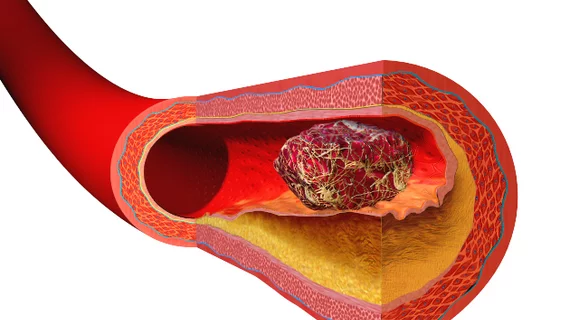New research highlights the connection between venous thromboembolism and COVID-19
Hospitalized COVID-19 patients experience a high rate of thromboembolic complications, according to new findings published in Thrombosis Research. Is thromboprophylaxis an effective treatment option?
“Estimates of the risk of arterial and, in particular, venous thromboembolic complications are still preliminary and depend on local diagnostic and pharmacological preventive strategies,” wrote first author Corrado Lodigiani, PhD, Humanitas Clinical and Research Hospital in Milano, Italy, and colleagues. “Better understanding of COVID-19-related thromboembolic risk will help to optimize diagnostic strategies and guide the design and conduction of randomized controlled trials on venous thromboembolism (VTE) prevention.”
Lodigiani et al. assessed data from 388 consecutive COVID-19 patients treated at a large hospital in Italy beginning in February 2020. The median patient age was 66 years old, 68% of patients were men and 16% required care in the intensive care unit (ICU). The in-hospital mortality rate was 26%.
Overall, thromboembolic complications occurred in 7.7% of closed cases, which the authors said corresponded to a cumulative rate of 21%. The cumulative rate among ICU patients was 27.6%. Of the 44 patients who underwent VTE imaging examinations, 16 had positive results. Ten of those confirmed events were pulmonary embolism. Nine of these patients, the authors added, “were not receiving any anticoagulant treatment.” Ischemic stroke was diagnosed in nine patients—three being treated in the ICU and another six from the hospital’s general ward. Heart attacks were confirmed in four patients.
All ICU patients and 75% of general ward patients received thromboprophylaxis treatment. One in two patients with VTE were diagnosed within the first 24 hours of their hospitalization, indicating that the thromboprophylaxis treatment could not have realistically prevented VTE in those particular instances.
“Our results indicate that thromboembolic complications may represent an integrating part of the clinical picture of COVID-19 and be already present at the time of initial hospital admission,” the authors wrote. “Their incidence, however, may have been highly underestimated due to the low number of specific imaging tests performed. It remains unclear whether increased intensity of thrombosis prophylaxis in selected patients may provide clinical benefit in patients without confirmed acute VTE. Interventional and management trials should be conducted to improve the prevention, diagnosis, and treatment of thrombotic complications in these patients.”
While thromboprophylaxis is not presently recommended for ambulatory patients “with acute medical illness or respiratory symptoms,” Lodigiani et al. did say there “is an urgent need to improve specific VTE diagnostic strategies and investigate the efficacy and safety of thromboprophylaxis in ambulatory COVID-19 patients.”
Click here for a full PDF of the study from Thrombosis Research.

